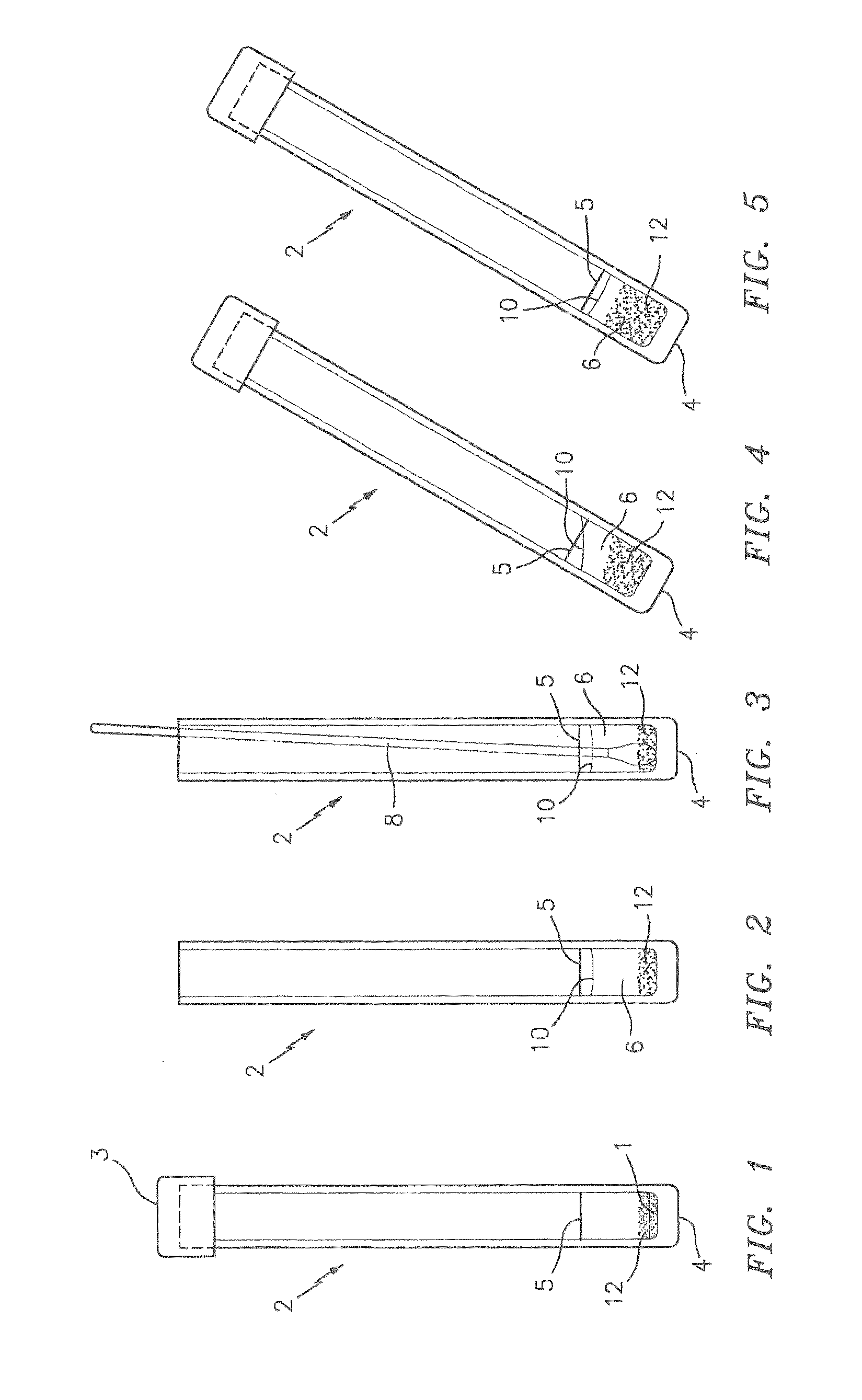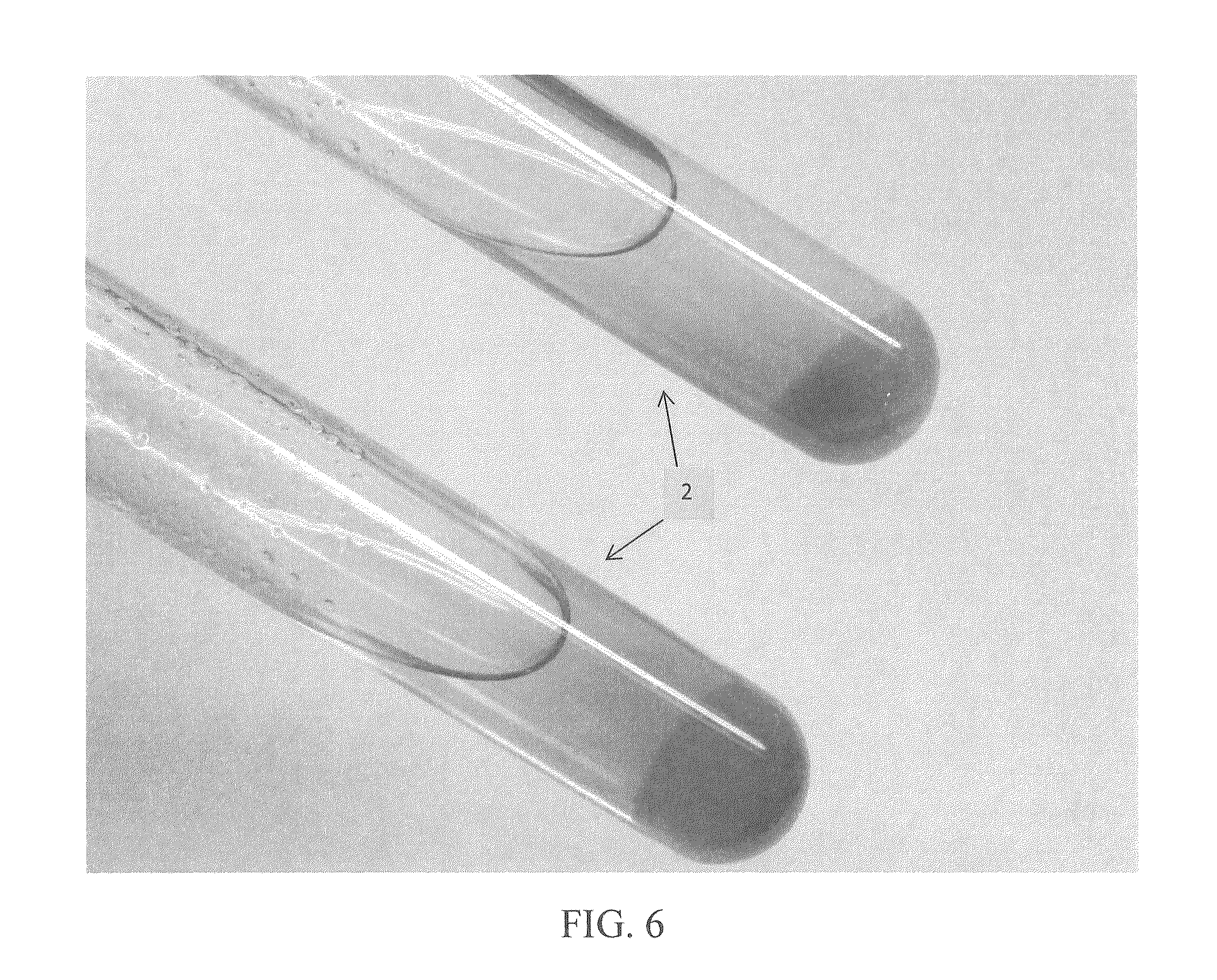Test mixtures for detecting the presence or absence of target microbes
a technology for detecting the presence or absence of target microorganisms, applied in the field of detection of target microorganisms, can solve the problems of requiring multiple steps, requiring special costly equipment, and requiring considerable amounts of time to produce a definitive resul
- Summary
- Abstract
- Description
- Claims
- Application Information
AI Technical Summary
Benefits of technology
Problems solved by technology
Method used
Image
Examples
Embodiment Construction
[0025]FIG. 1 is a side elevational view of a test tube denoted by the numeral 2 which preferably has a flat bottom 4 and a top closure 3, and which contains a dry powdered test mixture 1 which is funned in accordance with this invention for detecting the presence or absence of S. aureus in a sample; e.g., a first generational biological sample. The tube 2 is also provided with a reference line 5 that indicates the amount of water to be added to the tube 2 in order to properly hydrate the powdered mixture 1 for specimen sample testing. The drawings show the micro particles referred to above as numeral 12 in the sampling tube.
[0026]Acceptable hydrated test mixtures can be made using the following constituents in the ranges indicated, to create 15 ml of test mixture:
[0027]
Quantity per 15 ml Range per 15 ml Constituentof Test Mixtureof Test MixtureNitrate Broth7.5 ml1.0 ml-9.0 mlWater7.5 ml1.0 ml-9.0 mlUracil10.0 mg 1.0 mg-20.0 mgSodium Pyruvate10.0 mg 1.0 mg-20.0 mgL-glutamine20.0 mg 5...
PUM
| Property | Measurement | Unit |
|---|---|---|
| temperatures | aaaaa | aaaaa |
| size | aaaaa | aaaaa |
| period of time | aaaaa | aaaaa |
Abstract
Description
Claims
Application Information
 Login to View More
Login to View More - R&D
- Intellectual Property
- Life Sciences
- Materials
- Tech Scout
- Unparalleled Data Quality
- Higher Quality Content
- 60% Fewer Hallucinations
Browse by: Latest US Patents, China's latest patents, Technical Efficacy Thesaurus, Application Domain, Technology Topic, Popular Technical Reports.
© 2025 PatSnap. All rights reserved.Legal|Privacy policy|Modern Slavery Act Transparency Statement|Sitemap|About US| Contact US: help@patsnap.com


